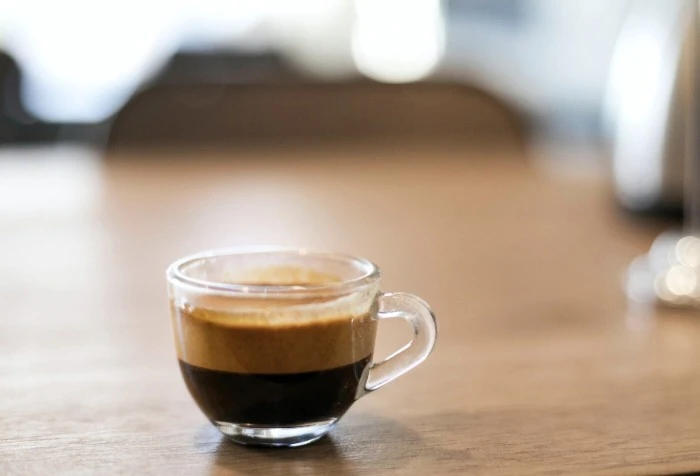Espresso and coffee are two of the most popular ways to enjoy caffeine, but many people wonder which one is better for their health. The answer isn’t straightforward because both have unique benefits and drawbacks. This article explores the differences between espresso and regular coffee, their health effects, and which might be the better choice for you.
What Is Espresso?
Espresso is a concentrated form of coffee made by forcing hot water through finely-ground coffee beans under high pressure. The result is a small, strong shot of coffee with a rich flavor and a layer of crema on top. Unlike regular drip coffee, espresso has a thicker consistency and a more intense taste.
Espresso is the base for many coffee drinks, such as lattes, cappuccinos, and Americanos. Because it’s brewed quickly—usually in 25 to 30 seconds—it captures different flavors and compounds than slower brewing methods.
What Is Regular Coffe e?
Regular coffee, often called drip coffee, is made by steeping coarser coffee grounds in hot water. The brewing process takes longer—typically four to five minutes—and produces a milder, larger cup of coffee.
There are many ways to brew regular coffee, including pour-over, French press, and automatic drip machines. The flavor and strength depend on factors like grind size, water temperature, and brewing time.
Caffeine Content: Espresso vs. Coffee
A common misconception is that espresso has more caffeine than regular coffee. While espresso is stronger in flavor, its caffeine content depends on serving size.
A single shot of espresso (about 1 ounce) contains roughly 63 milligrams of caffeine. A standard 8-ounce cup of drip coffee has about 95 milligrams. So, ounce for ounce, espresso has more caffeine, but most people drink more volume of regular coffee, leading to higher total caffeine intake.
If you drink a double shot of espresso (2 ounces), you’ll get around 125 milligrams of caffeine—slightly more than a cup of coffee. However, many coffee drinks, like lattes, dilute espresso with milk, reducing the caffeine per serving.
Antioxidant Levels in Espresso and Coffee
Both espresso and coffee are rich in antioxidants, which help fight inflammation and protect against diseases. However, the concentration differs due to brewing methods.
Espresso has a higher concentration of antioxidants per ounce because it extracts more compounds from the coffee grounds in a short time. Chlorogenic acids, which have anti-inflammatory and metabolism-boosting effects, are more concentrated in espresso.
Regular coffee also contains antioxidants, but they’re more diluted. If you drink a larger volume of coffee, you may still get similar antioxidant benefits over time.
Acidity and Digestibility
Some people find espresso easier on the stomach than regular coffee. This is because espresso is brewed quickly, extracting fewer acidic compounds than slower methods like drip brewing.
Dark roast espresso tends to be even gentler because the roasting process breaks down more acids. If you have acid reflux or a sensitive stomach, espresso might be a better choice.
However, some espresso-based drinks, like those with milk, can still cause digestive issues for people who are lactose intolerant. Black espresso or coffee may be better in those cases.
Effects on Heart Health
Coffee and espresso both contain caffeine, which can temporarily raise blood pressure. However, studies suggest that moderate coffee consumption (3-5 cups per day) may actually lower the risk of heart disease over time.
Espresso’s concentrated caffeine might cause a sharper spike in blood pressure for some people, especially if consumed quickly. If you’re sensitive to caffeine, opting for a single shot or switching to decaf might help.
Impact on Sleep
Since espresso is more concentrated, drinking it late in the day can disrupt sleep more than regular coffee. However, the total caffeine intake matters most. A large cup of coffee in the afternoon may keep you awake just as much as a double espresso.
If you’re concerned about sleep, avoid caffeine at least six hours before bedtime, whether it’s from espresso or coffee.
Weight Loss and Metabolism
Caffeine is known to boost metabolism and fat burning, and espresso may have a slight edge here due to its higher concentration of chlorogenic acids. Some studies suggest these compounds help regulate blood sugar and reduce fat absorption.
However, adding sugar, cream, or flavored syrups to espresso drinks can negate these benefits. Black coffee or plain espresso is the best choice for weight management.
Dental Health Considerations
Both coffee and espresso can stain teeth, but espresso’s darker color might lead to more noticeable staining over time. The acidity in coffee can also weaken enamel, making teeth more prone to damage.
To minimize effects, rinse your mouth with water after drinking coffee or espresso, and avoid brushing your teeth immediately afterward, as this can spread acids and worsen enamel erosion.
Which One Should You Choose?
The best choice depends on your preferences and health needs:
Choose espresso if: You prefer a strong, quick caffeine boost, have a sensitive stomach, or want a concentrated dose of antioxidants.
Choose regular coffee if: You enjoy sipping a larger drink, want more control over caffeine intake, or prefer a milder taste.
Both espresso and coffee can be part of a healthy diet when consumed in moderation. The key is to avoid excessive sugar and cream, which can turn a healthy drink into a calorie-laden treat.
Conclusion
Espresso isn’t necessarily “better” than coffee—it’s just different. The right choice depends on your taste, caffeine tolerance, and health goals. If you enjoy both, there’s no reason to limit yourself to just one.
The most important thing is to enjoy your coffee in a way that suits your lifestyle and well-being. Whether it’s a bold shot of espresso or a comforting cup of drip coffee, both can be part of a balanced, healthy routine.
Related topics:
How to Use Nespresso VertuoPlus
What is the Difference between Espresso and Filter Coffee?
Is There More Caffeine in Espresso or Coffee?


